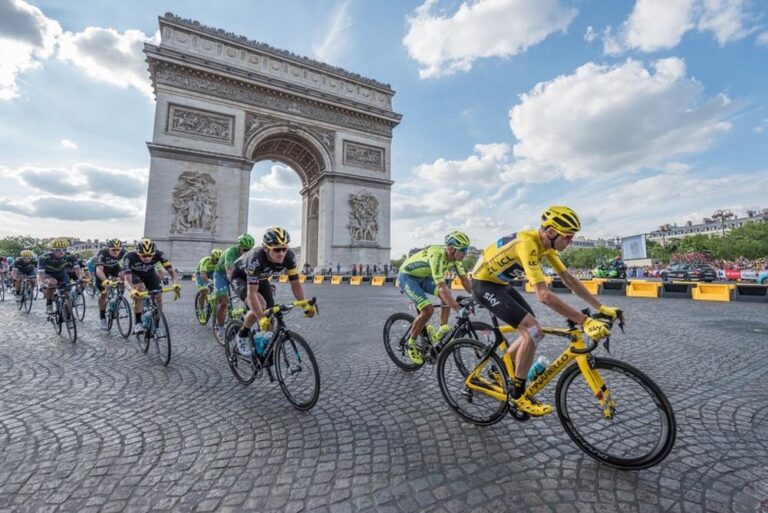Understanding the Mechanics of the Tour de France: A Deep Dive into Cycling’s Pinnacle Event
As one of the most grueling and revered athletic competitions in the world, the Tour de France captivates millions every summer with its breathtaking routes, intense competition, and storied history. But beneath the surface spectacle of cyclers battling through France’s picturesque landscapes lies a complex structure that dictates how the race unfolds. In this article, we break down the intricate workings of the Tour de France—from its multi-stage format, team dynamics, and strategic gameplay to the logistical challenges of supporting over 150 riders. Join us as we explore the framework that makes this enduring icon of cycling not just a race, but a monumental test of endurance, strategy, and teamwork.
Understanding the Structure of Tour de France Stages
The Tour de France consists of a diverse array of stages, each meticulously designed to test the limits of the riders and keep fans on the edge of their seats. The stages are categorized primarily into flat, hilly, and mountain routes, each presenting unique challenges. For instance, flat stages are typically favorable for sprinters, offering long stretches where speed prevails. Hilly stages, on the other hand, often see explosive moments as competitors strategically navigate ascents to gain an advantage. The mountainous routes are where climbers shine, negotiating steep inclines that can drastically shake up the overall standings.
Each stage can last from a few hours to half a day, varying significantly in length and terrain. The following elements are significant when analyzing the structure:
- Distance: Stages range from 120 to 240 kilometers.
- Elevation Gain: Mountain stages may feature as much as 5,000 meters of climbing.
- Race Type: Individual time trials require riders to race against the clock.
| Stage Type | Key Features | Typical Winners |
|---|---|---|
| Flat | Long, straight paths, minimal elevation | Sprint specialists |
| Hilly | Rolling terrain, requires strategy | All-rounders |
| Mountain | Steep climbs, summit finishes | Climbers |
| Time Trial | Solo effort, against the clock | Time trialists |
Key Strategies for Teams and Riders Throughout the Race
As the Tour de France unfolds, the strategies deployed by teams and riders can significantly influence both individual performance and overall standings. Tactical communication is paramount; teams must stay in constant contact to adapt to changing circumstances. This includes monitoring rivals’ moves and weather conditions. Key strategies often include:
- Peaking at the right moment: Timing a rider’s performance peaks to coincide with critical stages is essential.
- Team dynamics: Riders working in unison, utilizing drafting techniques to conserve energy, can provide competitive advantages.
- Segmentation of roles: Assigning specific roles to team members—such as sprinters, climbers, and domestiques—helps optimize the overall strategy.
In addition, mental preparation and resilience play a vital role as the grueling race progresses. Riders often face adversities, from unexpected mechanical failures to physical fatigue. Stress management techniques and teamwork can help mitigate these challenges. Teams frequently employ the following approaches:
- Emotional support: Encouraging camaraderie among teammates boosts morale.
- In-ride nutrition: Maintaining energy levels through strategic feeding at designated points ensures riders can perform optimally.
- Data analytics: Leveraging technology to assess performance metrics allows for real-time adjustments to strategy.
The Role of Support Staff in Maximizing Performance
The intricacies of the Tour de France go far beyond the athletes themselves; the expertise and dedication of support staff play a pivotal role in enhancing team performance throughout the grueling three-week race. From mechanics to soigneurs, each member contributes essential skills that help cyclists maintain peak condition while navigating the challenges of the route. Support staff are responsible for:
- Equipment Maintenance: Ensuring bikes are race-ready through regular tuning and repairs.
- Logistics Coordination: Managing transportation and supplies between stages to keep everything running smoothly.
- Nutritional Strategy: Offering tailored meal plans and hydration strategies to optimize performance.
Additionally, these professionals often serve as a psychological buffer, providing motivation and encouragement in high-pressure situations. Each interaction can reinforce the team’s cohesion, enabling athletes to focus entirely on their performance. Support staff also track data analytics to adjust strategies in real-time, emphasizing the importance of a holistic approach to racing. Below is a simplified table illustrating some of the roles within a team:
| Role | Key Responsibilities |
|---|---|
| Team Manager | Oversees all operations and logistics. |
| Mechanic | Maintains and repairs bicycles. |
| Soigneur | Handles nutrition and athlete care. |
Navigating the Challenges: Terrain and Weather Conditions
The Tour de France is not just about speed and endurance; it also has a dynamic relationship with its environment. Riders must constantly adapt to varying terrain types, which range from the flat stretches ideal for sprinters to the grueling mountain passes that test even the sturdiest climbers. Each stage presents its own unique challenges, including:
- Elevation Changes: Riders face steep ascents and rapid descents that can significantly impact performance.
- Road Conditions: Paved, cobblestoned, or muddy paths require different handling skills.
- Technical Corners: Tight turns can lead to crucial time losses if approached incorrectly.
Equally influential is the ever-changing weather conditions that riders must contend with. Rain can make roads slick and hazardous, while extreme heat may lead to dehydration and fatigue. Some key factors include:
- Temperature Fluctuations: Varying temperatures impact hydration strategies and physical exertion levels.
- Wind Direction: A headwind can slow riders down, while a tailwind can provide a much-needed boost.
- Precipitation: Rain or storms not only affect visibility but can also disrupt team strategies.
| Weather Condition | Impact on Race |
|---|---|
| Sunny | Dehydration risks; faster speeds |
| Rainy | Increased risk of falls; slower pace |
| Windy | Challenges in drafting; energy expenditure |
Future Outlook
In conclusion, the Tour de France stands as a pinnacle of endurance and strategy in the world of professional cycling. Its intricate structure, from the painstaking preparation of teams to the meticulous orchestration of daily stages, reflects not only a race of physical prowess but also a test of tactical acumen. As cyclists navigate diverse terrains and varying weather conditions, their journeys are not just about speed but also survival, camaraderie, and resilience. For fans and aspiring cyclists alike, understanding the mechanics behind this iconic event enhances our appreciation of the sport. As the peloton gears up for the next edition, one thing remains certain: the Tour de France will continue to captivate and inspire, both on and off the saddle.




